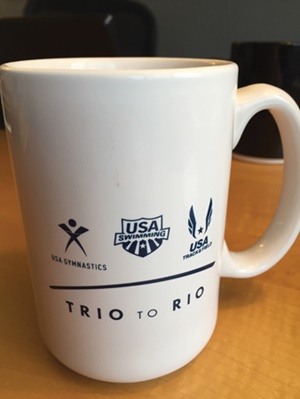More than 20 months after the three biggest Summer Olympic sports governing bodies united to sell bundled media and hospitality inventory, they still don’t have any takers.
The “Trio to Rio,” created by USA Swimming, USA Track & Field and USA Gymnastics in early 2014, earned widespread praise from Olympic sponsors and nonsponsors as a concept. But in practice, few have embraced it.
“Collectively, we may have been pursuing more than people were willing to spend,” said USA Gymnastics President Steve Penny. “When what we were offering was a very diverse demographic, and a diverse collection of assets, whereas a lot of the companies involved in the Olympic movement are really thinking more targeted and pinpointed.”
Nevertheless, top officials for all three sports say the Trio to Rio eventually yielded results, if not in the manner they intended. Swimming’s recent sponsorship deal with Blue Diamond almonds originated in a Trio to Rio meeting, and track and field’s supplier deal with the Japanese mattress topper maker Airweave for the 2015 World Championships did too, said Jill Geer, USATF chief public affairs officer.
Another company, which the governing bodies would not name, is in advanced talks with each group separately for the Olympic year. And, they say, the joint sales meetings opened new avenues for future deals.
“I think in hindsight it’s turned out to be a better cultivation strategy than maybe a deal-closing strategy right now,” said USA Swimming CMO Matt Farrell, “but I still think it has value.”
Together, the three sports are a major presence. They receive more prime-time programming during the Olympics than all other sports, and at the 2012 London Games, they accounted for 63 percent of the American medals won.
Under the bundled deal, a single contract would include digital, print and TV advertising for each sport, along with hospitality options at marquee events like the Olympic trials. Official worldwide or U.S. Olympic sponsors could use the bundle to augment their campaigns, or nonsponsors could use the deal as an appetizer for a bigger deal.
But corporate sponsors were more interested in a precision play, and the sports each have distinct demographic and geographic advantages.
“We really wanted to focus our attention, and really leverage each other, so focusing on one team really made the most sense for us,” said Maya Erwin, Blue Diamond’s senior marketing manager, about the company’s deal with USA Swimming.
The challenges created by the bundle weren’t limited to the buy side, though, said one consultant who attended an early meeting at the United Center in Chicago. While the governing bodies created the initial package together, they were eager to prove their willingness to customize as requested. Those customizations quickly steered negotiations away from the bundle toward more conventional bilateral arrangements, the consultant said.
Penny said the strategy was also unsuccessful in pushing up the time frame for the Olympic sales cycle. They went to market just weeks after the Sochi Winter Games ended, hoping their new idea would get talks started sooner. But the resulting deals have only come together in recent months, in line with the usual Summer Olympic timing.
The three bodies last attempted bundled selling in 2007, when they sold their media rights to Wasserman Media Group. That project was abandoned two years later.
Tim McGhee, former AT&T executive director of sponsorships and founder of MSP Sports, still thinks the concept can work but isn’t surprised by its struggles.
“They have disparate assets to sell, and they probably value those assets differently,” McGhee said. “They put more or less emphasis respectively on certain assets, so pulling them all together is probably difficult.”
The governing bodies remain on good terms and expect to continue working together. They continue to believe there’s a market, especially related to the broadcast assets.
“My own perspective is, there’s a lot of reasons we’d want to do it again even if the outcome is what it has been,” Penny said.




